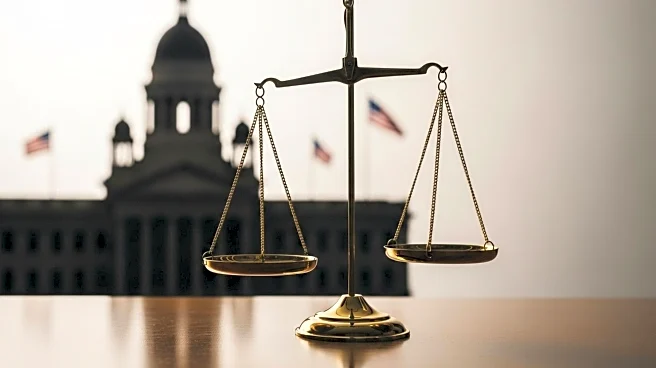What's Happening?
Residents of Washington, D.C. are increasingly purchasing the city's flag as a symbol of opposition to President Trump's recent federal takeover of law enforcement in the District. The D.C. flag, featuring three red stars and two red bars on a white background, has become a popular item among locals expressing their discontent with the administration's actions. Since the announcement on August 11, stores have reported a surge in flag sales, with some struggling to keep them in stock. The flag's design, rooted in historical symbolism, has been embraced by residents as a sign of unity and defiance against the federal intervention.
Why It's Important?
The surge in D.C. flag sales highlights the growing tension between the city's residents and the federal government. President Trump's decision to federalize law enforcement in the District has sparked renewed calls for D.C. statehood, as the city's 700,000 residents lack voting representation in Congress despite paying federal taxes. The move has also raised concerns about civil liberties and the autonomy of the District, with many residents feeling unsafe and frustrated by the increased presence of federal law enforcement. The flag has become a powerful symbol of resistance and pride, reflecting the community's desire for representation and self-governance.
What's Next?
The federal takeover has intensified discussions around D.C. statehood, with local leaders and residents advocating for full representation in Congress. Mayor Muriel E. Bowser has reiterated the importance of statehood in light of the recent developments. As the situation unfolds, residents may continue to use the flag as a form of protest and solidarity, while political leaders push for legislative changes to grant the District greater autonomy. The ongoing federal presence may also lead to further demonstrations and calls for action from civil society groups.
Beyond the Headlines
The increased visibility of the D.C. flag underscores the broader cultural and political implications of the federal intervention. It serves as a reminder of the historical struggle for representation and the unique status of the District within the U.S. political system. The flag's popularity may also influence public perception and discourse around issues of governance, civil rights, and the balance of power between local and federal authorities.












